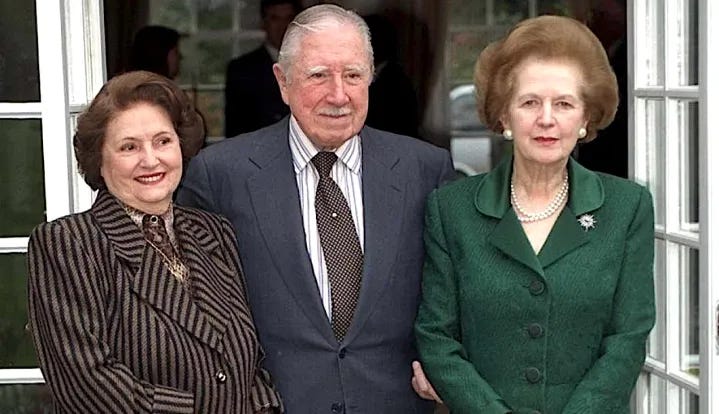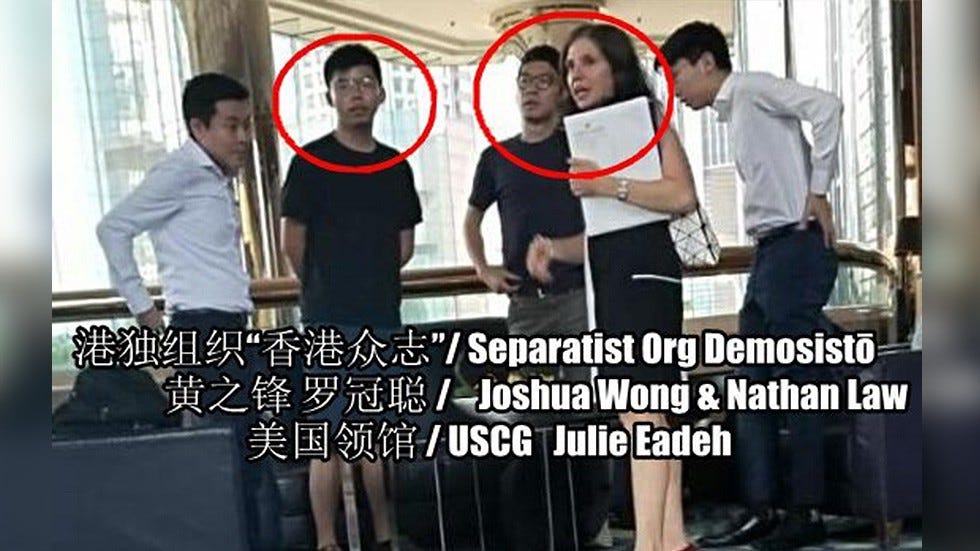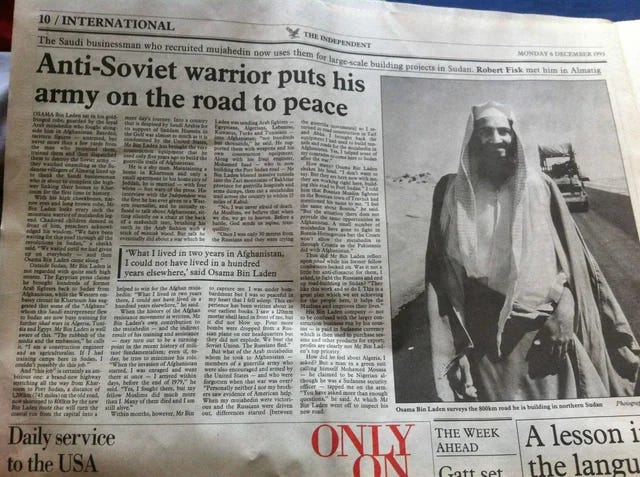The age of color coups? What the fall of Syria teaches us
Color revolutions are done and past. We are now entering the age of barbarism.
If you like this article, please don’t hesitate to click like♡ and restack⟳ ! It’s a quick way to make sure more people will get to enjoy it too.
And don’t hesitate to subscribe to my newsletter for free to receive my new articles right in your inbox!
Bashar al-Assad, who had presided over Syria for 24 years, was made to flee the country in December 2024 after rebel groups, led by the ISIS-affiliated HTS (or Hayat Tahrir al-Sham, previously al-Nusra) took over the capital of Damascus.
Syria had been embroiled in a war against these groups since 2011, as part of the Western-backed Arab Spring. The situation quickly turned to a protracted war, with the “rebels” at times making gains and at times losing them. With Russia’s involvement (at the request of the Syrian government), the situation eventually turned from a desperate struggle into a stalemate — even as NATO countries bombed Syria and maligned Assad in the press to try and change the balance. Claims of “barrel bombs”, a word we had never heard before the war and have not heard since, were made. Apparently, the bombs provided to the Syrian Air Force by Russia were not sufficient. They needed “barrel” bombs too.
A chemical attack was staged in 2013, and instantly blamed on Assad, which led to NATO countries bombing a pharmaceutical facility in retribution. In an official press release, NATO said that there was a “significant body of information indicat[ing] that the Syrian regime was responsible for the attack.” But a few months later, the rebels responsible for the attack came clean by themselves. They had been supplied the Sarin gas by Saudi Arabia (in fact by the same man who first blamed the Syrian government for the attack, Prince Bandar bin Sultan, head of the Saudi Arabian intelligence services) but were apparently not told they had been provided it. Since they were not trained in its use, they mishandled it and accidentally set off the gas. According to these moderate rebels, to borrow the term from Obama, the sarin gas attack was an accident — but one they were still wholly responsible for. And yet, it was civilian facilities that were bombed by NATO over this.
But there is a reason I did not call it a civil war; this is because the rebels, as is often the case around the world, were not only funded by the United States (along with “Israeli” and Turkish involvement) but also entirely foreign to Syria. There was nothing civilian about it.
Rather than looking at the individual figureheads and the timeline of events, we can look instead at the movements of the war in the abstract to come to a chilling realization: that the Syrian war was a color coup, a new development that, as we’ve seen, is much more barbaric and unrestrained in its goals and methods.
A brief history of color revolutions
The term ‘color coup’ is a nod to its more sophisticated brethren, the color revolution. It’s not a very famous term, so some explanation might be in order.
Color revolutions have been in use by the United States regime change apparatus for decades. Most notably, a color revolution is what brought down the USSR and led to its forcible overthrow (the Supreme Soviet was forced out of the parliament building by tanks on the orders of Yeltsin; that is to say, it wasn’t a peaceful handover of power but an illegal one that Soviet officials tried to fight until the end).
In a color revolution, a legitimate grievance that the people are protesting for becomes the issue. It gets picked up by the Western press and made into the defining issue of a generation. This issue could be as simple as a lack of meaningful employment, demand for more or different representation in government, or anything else that could be addressed with a discussion and compromise on both sides.
Certainly the problem is real and people feel it. It exists in the West every day, after all. In the United States alone, many people are forced to work two jobs to make ends meet. The difference in a color revolution is that there is foreign interference — mainly from the United States, because what else is new — to influence a certain outcome.
In 1970, Salvador Allende was democratically elected President of Chile. Three years later, on September 11, 1973, he was killed in a coup that put Augusto Pinochet in power. Pinochet became a darling of the West despite his regime being responsible for countless acts of torture, rape, massacres, and deaths under his orders. It won’t do to innumerate all of his barbaric crimes because they are all absolutely depraved; rather, we can simply say that Chile’s National Sports Stadium became a prison camp for civilians critical of the regime because they had no room left elsewhere for all the prisoners. A massacre was committed on some of these civilians by machine gun fire on the field as other prisoners were forced to watch from the stands. Female prisoners were routinely raped and sexually tortured. This was just one of hundreds of crimes committed by Pinochet.
Allende was removed from power in a color revolution. Social unrest was created through international sanctions against Allende’s government, on top of which reactionary elements, such as business owners, sabotaged the economy, leading to hyperinflation and government lockouts. A political coalition was formed against Allende’s socialist party in Parliament, which blocked anything Allende tried to redress the situation.
In other words, it’s not that Allende was unwilling to improve conditions: it’s that everything possible was done against him so that he could not. If anything, his failure is that he did not take a more hardline stance but still tried to operate within a liberal republic.
Regardless, the Western press quickly set their sights on Chile like vultures. In the United States, alarming headlines were plentiful. Time Magazine made Allende the cover of their October 1970 issue (before Allende took office), titled Marxist threat in the Americas. Ominous.

The Christian Science Monitor stated at the time “More than just voting for a candidate, in Eduardo Frei, Chileans will be voting for democracy and freedom” — trying to influence the election in favor of the opposition, which is very timely today after the US government has been yelling about Russian interference in their own elections.
Even in 2013, the BBC was still peddling its old Cold War propaganda. In one retrospective article, they state that:
President Allende's attempts to re-structure the nation's economy led to soaring inflation and food shortages. A series of strikes paralysed the country and left the capital isolated in the tense days that preceded the coup.
While not addressing the fact that by this time, heavy sabotage from both the CIA and the Chilean opposition had created this situation and prevented Allende from doing anything about it.
In declassified documents, the CIA admits to having directly intervened in Chile from 1970 to 1973. In one instance, they state that:
[The] CIA mounted a propaganda campaign centered around “El Mercurio” and the issue of Allende brazenly taking his first step in “communizing” Chile by attacking freedom of the press.
Such is the nature of a color revolution. Time and time again, legitimate grievances are exacerbated so as to make any solution with the current government impossible. Allende’s attempts to address the nation and start a dialogue were maligned, ignored, or outright mocked. He had to fix the situation right here, right now: nothing less would be accepted by the so-called “international community”, who did not even feel it necessary to explain why they cared so much about Chile in the first place; it was just accepted that this was their playground to agitate in.
However, when Pinochet took power and immediately committed massacres and depraved acts of torture, the same mainstream media urged that he should be given time to develop. He shouldn’t be rushed! After all, he had a lot on his plate in order to “fix” the country. His human rights abuses were simply ignored by the press, and any little crumb he threw in terms of economic development (which were mostly backed by Reagan and Thatcher money) were presented as the best thing since sliced bread.
Ultimately, Pinochet’s rule did not pan out for Chileans — obviously. The goal of a color revolution, beyond foreign involvement, is not to fix the economy or answer the people’s woes; it’s to make lots of money for Western capital. Under Pinochet:
GDP fell by 12.9% in 1975 [1]
Industrial production decreased by 28% in 1975 [1]
Wages decreased by 8% [1]
Family allowances in 1989 were only 28% of what they had been in 1970 [1]
A severe recession happened in 1983 and that proved to be the final nail in the coffin.
Yet, this was called the “Chilean Miracle” in the West! A miracle for Western capital, surely.
There have been other color revolutions since Pinochet’s. Very quickly, we can list:
The Tianan’men square riots in 1989 (more aptly named the Beijing Riots as they spread throughout the capital)
The overthrow of the Soviet Union in 1991
Rose Revolution in Georgia (2003)
Orange Revolution, Ukraine (2005)
Arab Spring, 2011
Euromaidan (Ukraine), 2014
Hong Kong riots, 2019
Bolivian coup d’état, 2019
Belarusian protests, 2020
Kazakhstan, 2022
Iran, 2023 (Woman Life Freedom, though attempts never really end in Iran)
Georgian protests of 2024 (ongoing, with French president of Georgia Salomé Zourabichvili refusing to recognize the election results that gave opposition Georgian Dream a majority in Parliament).
The Romanian presidential crisis of 2025.
All of them paid for by the United States — after the Tiananmen protests, the CIA exfiltrated its assets through Hong Kong as part of Operation Yellowbird.
In the Hong Kong riots of 2019, we remember the four big leaders of, conversely, a very tiny party: Joshua Wong, Nathan Law, Jeffrey Ngo and Agnes Chow. All four (but Joshua especially) were suddenly proclaimed to be the voice of a generation in the Western media. Four kids who we had never heard of were suddenly deified to the status of revolutionary leaders, demanding independence for Hong Kong — which would have also benefited Western interests, but this was of course never mentioned. If there was anyone we common people in the West had to listen to, it was the four of them. All other voices, especially opposition to theirs, was silenced or considered to be “captured by Beijing,” to be dismissed. This is how the media controls information and, ultimately, what we believe.
Their party, Demosisto, only ever won one seat in the Legislative Assembly in 2016. They ran on a platform of full independence for Hong Kong. But polling numbers showed that independence was only favored by 17-20% of the Hong Kong population prior to 2020 — and this was for independence, not for Demosisto itself. In other words, this party was wholly unpopular, no matter what the media said.
And yet we were made to believe these four, barely in their 20s at the time, were the future for Hong Kong. Something doesn’t add up.
Then some time in 2019, as the riots in Hong Kong soared, Demosisto leaders Joshua Wong and Nathan Law were photographed in a hotel lobby meeting with United States Consul General Julie Eadeh.
In 2020, after the National Security Law was passed by the Hong Kong legislature, Demosisto suddenly announced its own dissolution. Notably, the new piece of legislation made it mandatory for parties and NGOs to disclose foreign funding sources past a certain amount. Evidently, Demosisto (which received funding from the National Endowment for Democracy, a self-admitted CIA front) preferred to disband than have to explain their funding.
Joshua Wong was convicted in 2024 under the Sedition Act, which includes the National Security Law in its framework. His co-conspirator Agnes Chow was convicted as well, but Nathan Law made it out of the country under Boris Johnson’s (then Prime Minister in the UK) offer of citizenship to all Hong Kong citizens during the 2019 riots — a form of brain drain and most of all preventing their regime change assets from being arrested in China. Today, just five years later, these assets are trying to go back to Hong Kong as they are destitute in the UK and face daily racism.
The summary so far
A color revolution normally happens like this:
Legitimate grievances are latched onto by foreign powers and exacerbated so as to render a solution impossible.
In the second phase, locals working for imperial interests are activated, and propped up as saviors by the Western media.
The process continues: deifying the puppets and vilifying the legitimate government, up until it gets ousted either in a coup or “peacefully” by stepping down.
There is an implicit characteristic of a color revolution however: it happens mostly locally. While imperial powers meddle and do their best to influence the outcome, color revolutions generally happen more or less peacefully (there was a false flag massacre committed in Ukraine to give the Euromaidan protests a push) and, if weapons are to be used, they are usually wielded by the opposition forces who are nationals of the country they pretend to fight for.
Syria, however, presented a new weapon in the arsenal of regime change: the color coup.
The new development of the color coup
I must admit that I thought I’d coined the term color coup, but the Palestine Chronicle beat me to it by a decade. In their 2013 piece centered around the aftermath of the Arab Spring in Egypt, they write:
A new tactic has been added to the US democracy promotion arsenal, where ‘color revolutions’ are too difficult, and ‘postmodern coups’ fail.
The keyword is where color revolutions are too difficult indeed.
What is easier than a coup? Funding, equipping and training roaming bands of rebels to tear up the country from the inside, it seems.
Before his reinvention as a Zelensky fan under the name Ahmed al-Sharaa, HTS leader Abu Mohammed al-Jolani was freely roaming the Syrian countryside, beheading “infidels” — including children — and disseminating the videos online, no doubt in a move that would somehow bring about the Caliphate.
Most of the rebels in Syria came from abroad; Al-Jolani himself is a Saudi national (though, he assures us, of Syrian origin). The numbers are a little difficult to accurately calculate, but in 2015 already it was reported that over 30,000 ISIL fighters came from 86 countries to fight in Syria and Iraq. At its peak, there were only around 150,000 reported rebels in Syria — though they were able to replenish these numbers after losses.
But the Syrian operation started out as a color revolution attempt. It was part of the US-backed Arab Spring phenomenon, which relied heavily on Western social media to coordinate.
Except Assad stood stronger than expected. As Tunisia, Egypt and Libya fell to the Spring, Syria remained.
And so a war was started. A wholly manufactured war that could easily become protracted if need be; and indeed it became a long war, lasting over 10 years.
We can then say that the color coup is the evolution to the color revolution: when the revolution is impossible or too costly, then terrorist cells that the West has been cultivating are activated. They are allowed to tear up the country without repercussions, and offer a great bailout for the West. On the one hand, imperial powers can pretend to condemn their atrocities with strong, but useless, words. On the other, these terrorist cells also self-finance some of their ventures by capturing territory and exacting taxes on the population (in-between two massacres, of course).
And in a final twist, imperial powers can also use the havoc these terror cells cause to justify intervention — like NATO did after the sarin gas attack. Likewise in West Africa, France used the excuse of ISIS cells in the Sahel to launch Operation Serval, which was more concerned with putting French troops on African soil to monitor and repress decolonial activity than they were concerned with putting a stop to terrorism.
It’s not entirely new either. Al-Qaeda was created for this purpose in Afghanistan in the 1980s. At the time, a coup in Afghanistan established a socialist government. Of course, this was not allowed by the international community, and that is when Osama Bin Laden was propped up as a “freedom warrior”. His Mujahideen were armed and trained by the CIA during Operation Cyclone (whether directly or indirectly is another question that has yet to have a definitive answer, but the operation ended up arming him regardless).
The civil war in Afghanistan pushed the socialist government to ask for Soviet military help, and the Red Army was deployed. This served another purpose for Western interests: they were able to tie up the Soviet Union into a money pit, one that required constant investment that, the US government calculated, the USSR could not match up. It was a color coup.
Syria’s case, however, may show that we should expect more color coups from now on instead of the perhaps more peaceful color revolution. Even the Euromaidan massacre was part of this current; it turned what was a color revolution into a color coup.
Where can we expect them from now on? Last year, Iran was attacked from inside with homemade bombs. Just a week ago, civilian buildings in Moscow were attacked by Ukrainian drones.
It seems that as the “rules-based international order” breaks down, it wants to pull everyone else down with them, perhaps as a way to cling to the walls before the inevitable fall. It is going to be the age of barbarism if we let it continue.









Excellent article, but I am a bit confused, and forgive my possible ignorance here, but can you clarify how Libya/Gaddafi were "close" to Israel? My recollection is of Gaddafi being a staunch supporter of the Palestinian cause. Thanks!
Really enjoyed reading this article - history continues to repeat itself. I had never heard of the term "color coup," but I do think it adequately describes the situation in Syria, which as you said did not have the same effect of the 'Arab Spring' like Egypt, Libya and Tunisia did. As Empire faces its declines, not only do we see it becoming increasingly barbaric, but also overt in its actions, as we see in Syria where a takfiri head-chopper is the country's "leader" but then again, the West has always propped up murderous leaders as long as they serve their purpose.